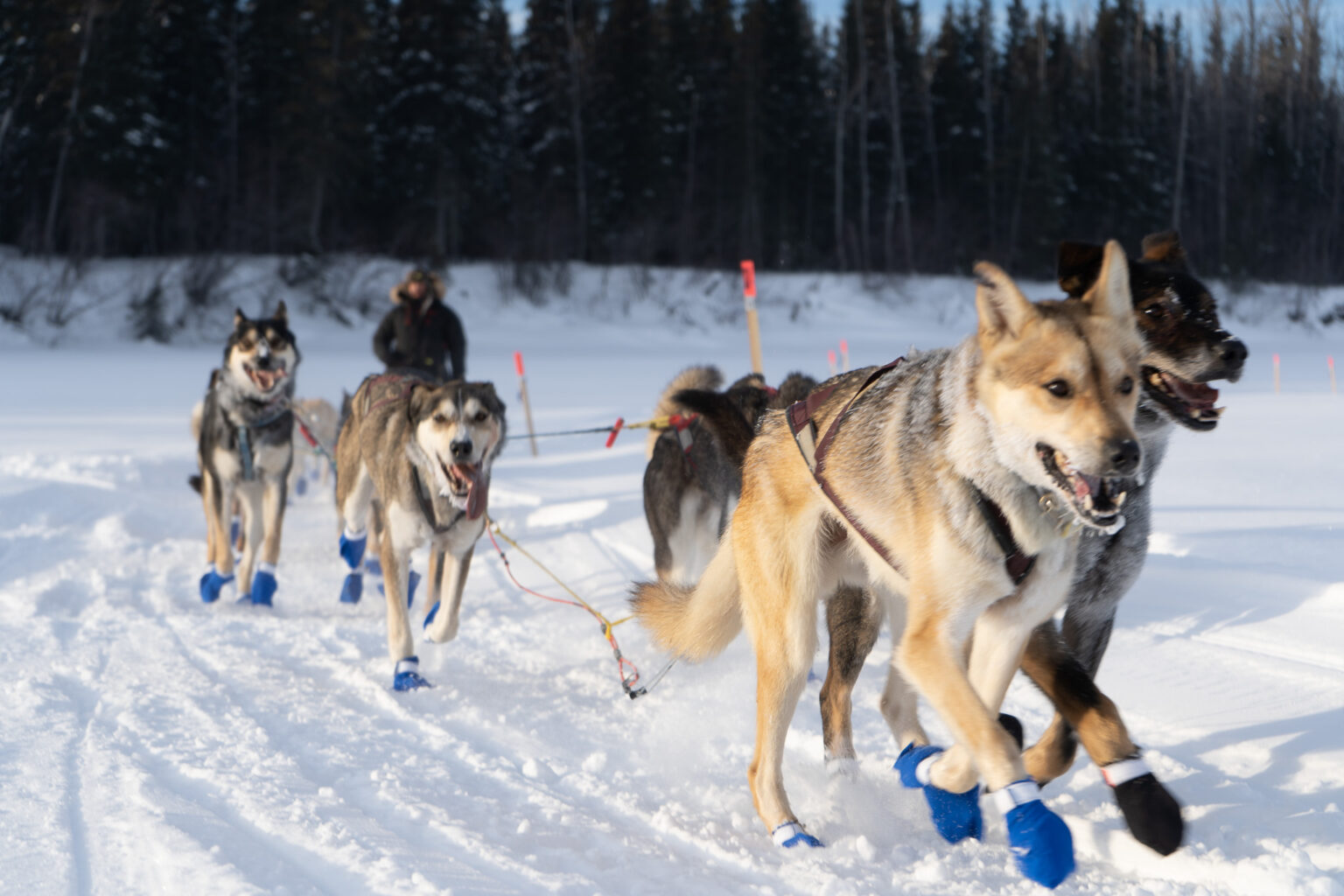This article by Lex Treinen was originally published by Alaska Public Media. It was republished with permission through a partnership with KNOM.
Around midday Tuesday at the race checkpoint here, veteran Matt Hall was smiling through his sun- and wind-burned face. Why the cheery mood after one of the most notoriously challenging sections of trail?
“I was prepared for the worst it’s ever been, which puts me here with smiles,” said Hall.
Leaving the prior checkpoint of Rohn, mushers steeled themselves for what Iditarod officials described as the worst moguls in the history of the race, comparing the stretch to a washboard with 4-foot-high bumps.
While the trail was not easy, some mushers said it was better than they planned for.
“Probably the best I’ve ever seen it from Rohn over here to Nikolai,” said Richie Diehl, in his 11th Iditarod. “It was a little mogul-ey in places but not nearly as bad as last year.”
Still, there was plenty of beating that mushers, their sleds and their dogs took throughout the 75-mile run over the windblown Farewell Burn and the mogul-dotted Buffalo Tunnels.
Kelly Maixner said his back ached from the run, despite the Ironman Triathlon finisher’s athleticism.
“It was as bad as I’ve ever seen it, as far as the moguls go,” he said. “And then there was actually mud on several miles of it, too, which I’ve never seen mud before.”
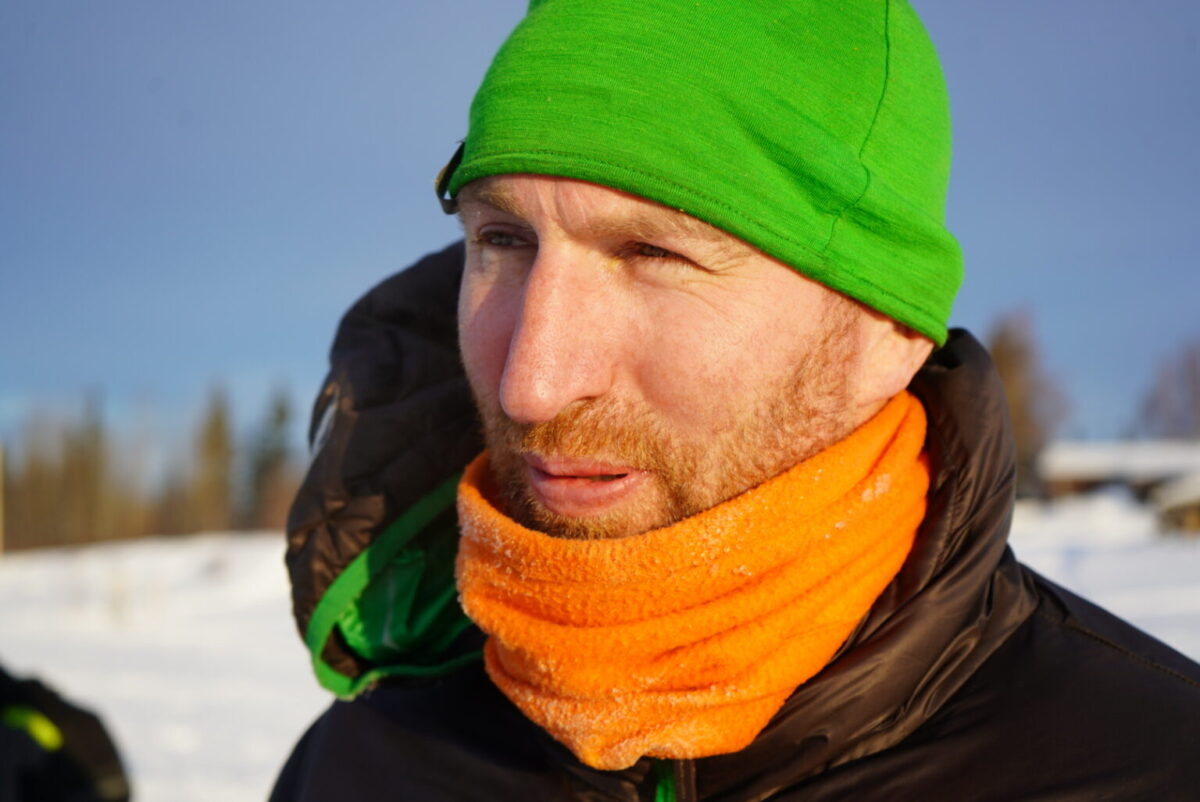
This is Maixner’s ninth Iditarod. His last was in 2020. He said the trail was also hard on his dogs, which likely means he’ll take his mandatory daylong rest earlier than he expected.
“They’re a little, maybe, banged up, so we’re probably gonna 24 earlier than I think I was going to, but they’re fine and energetic and happy to go,” he said.
For mushers who decided to stop in Nikolai, the checkpoint was a good spot to recover from their aches and work on their sleds.
Ryan Redington switched out a strip of sled runner plastic when he discovered a crack through the aluminum frame.
“Hopefully that makes it to McGrath,” he said, about the next checkpoint 48 miles away.
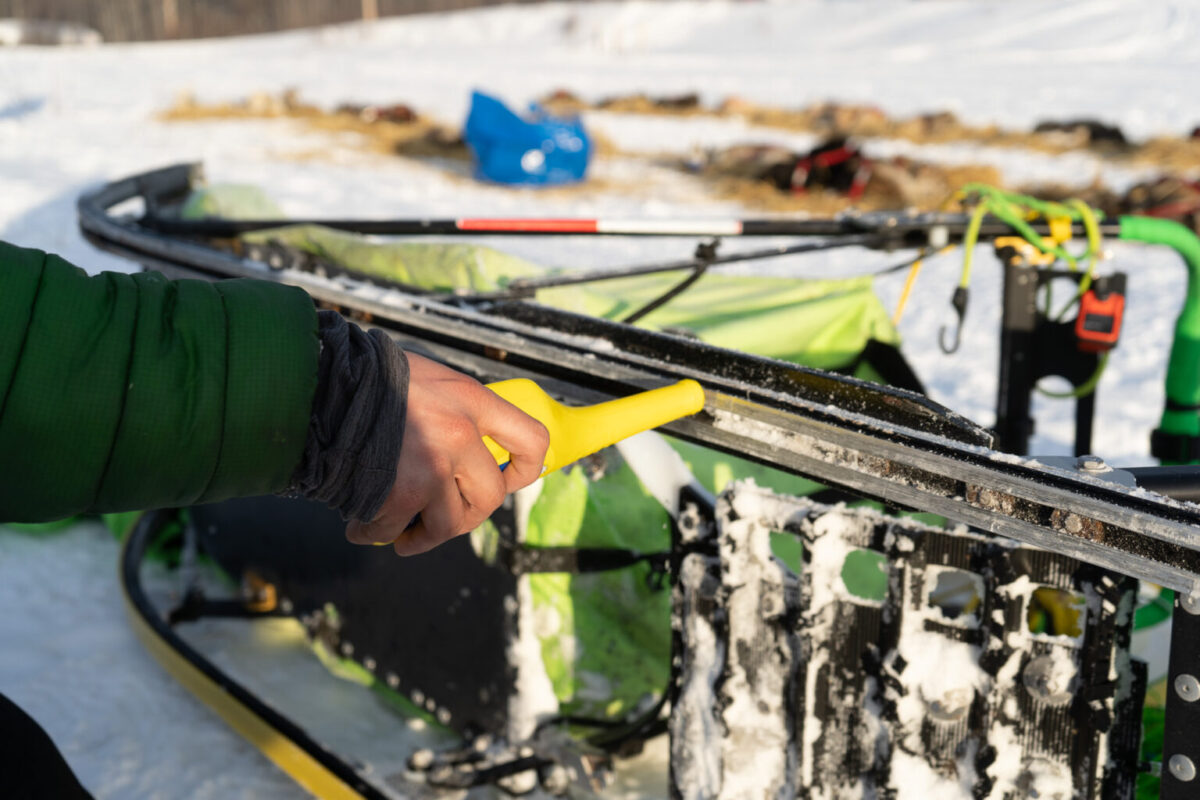
Several top mushers sent dogs home in Nikolai that had sustained minor injuries on the trail. Reigning champ Brent Sass had a dog, Marty, sitting in his sled bag when he pulled in.
“I’ve been carrying a lot of dogs, I carried this guy for 60 miles, so that was fun,” he said.
Sass was first out of the checkpoint at 8:45 a.m. Tuesday, pulled by an 11-dog team. It’s the same number of dogs he finished with last year — and now he still has more than 700 miles to get to Nome.
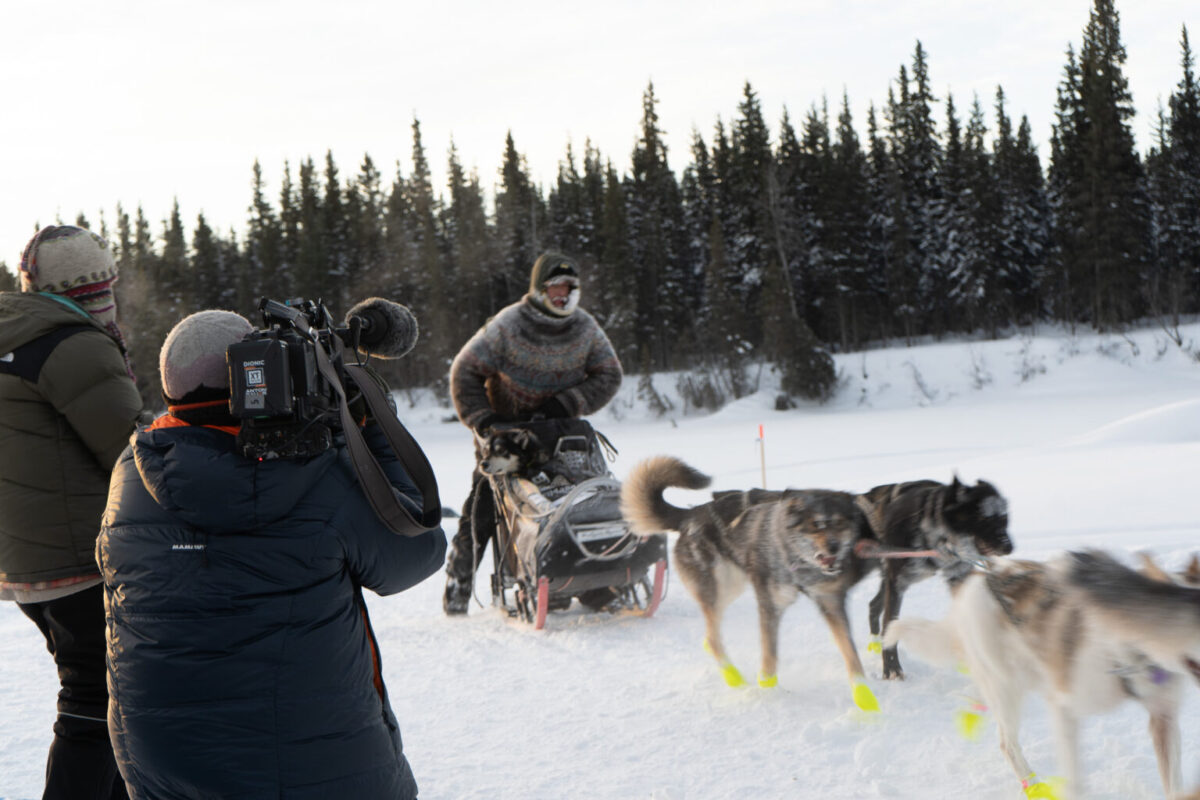
Jessie Holmes arrived in Nikolai shortly behind Sass. He still has a tender wrist from a construction accident last spring. But it wasn’t his wrist that bothered him as he cut open his bags filled with extra gear. Instead, he said, it was his knee.
“I bashed up my knee last night though and I couldn’t really walk this morning, but I took a nap and I’m all good now,” he said.
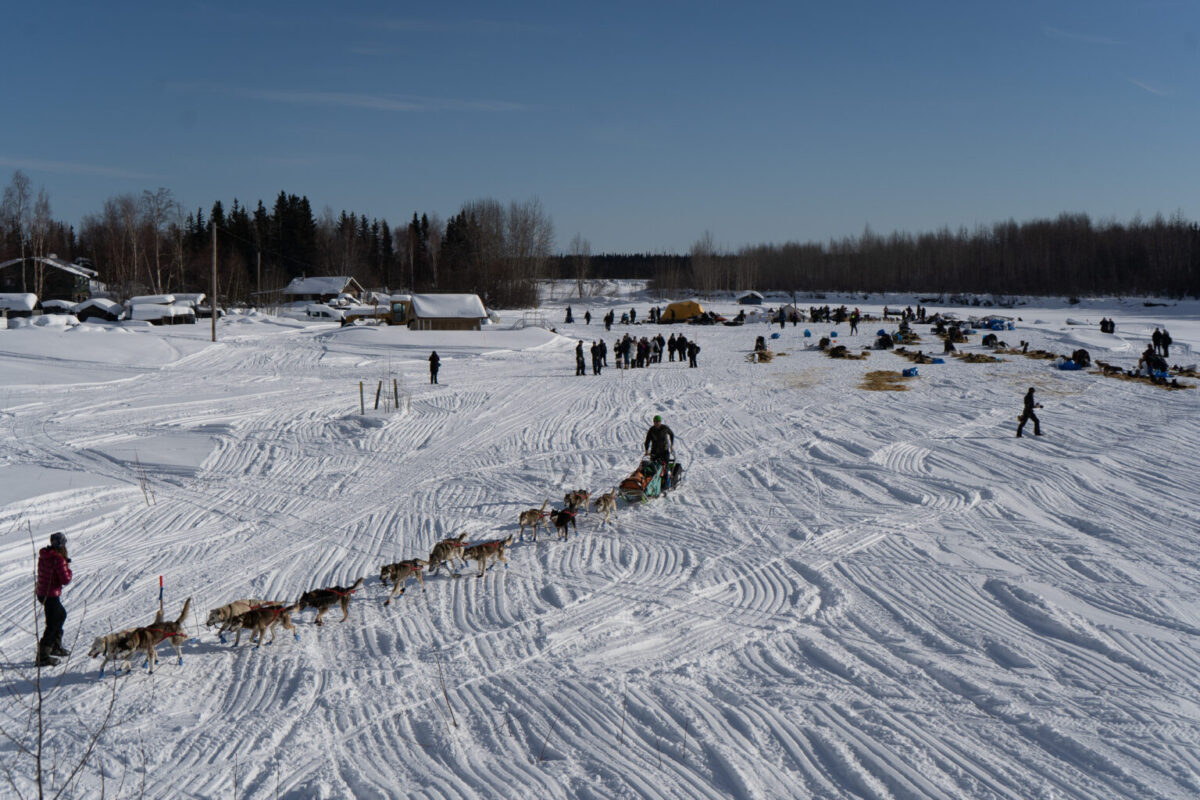
The lingering pain wasn’t enough to get him to rest at the checkpoint though. He pulled his snow hook after just a 14-minute stop and was on his way, five minutes behind Sass.
Other top mushers took a different race strategy.
Veteran Nic Petit was first into Nikolai at 6:57 a.m. Tuesday. But instead of blasting through the checkpoint like Holmes and Sass, Petit sauntered around the village, stopping by the school cafeteria for a bacon burrito.
A few hours later, after a nap, he lounged in his sled snacking on more bacon. He said he was in no hurry. He decided to take his mandatory 24-hour rest early. His strategy?
“Stay away from that big thing in the sky there,” he said, pointing to the sun.
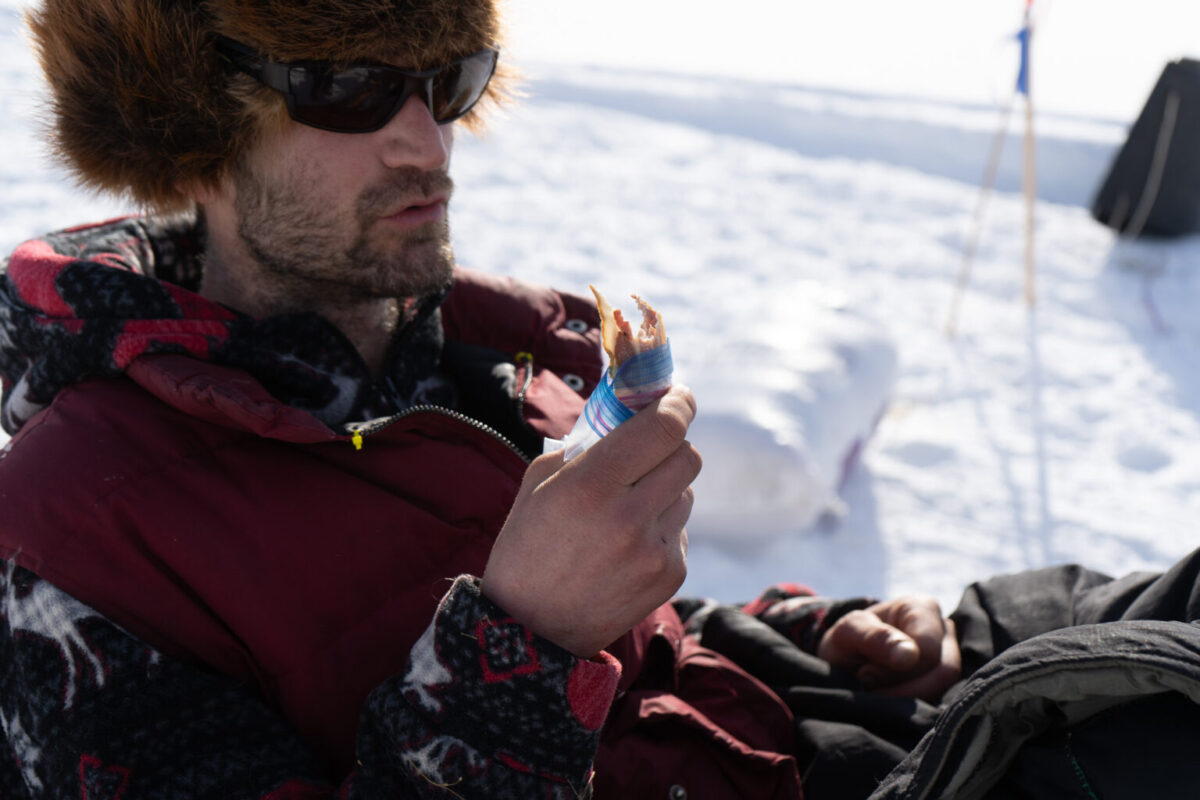
The sun — and the difficult trail behind them — factored into the decisions of the many mushers who decided to stop and rest here. Temperatures soared above freezing by the afternoon, about 15 degrees above average for the village of about 100 people.
A few mushers-at-rest took advantage of the heat themselves, napping in their sleds or on jackets on the snow.
Mille Porsild, racing her fourth Iditarod, was about to lay down for a nap herself, but first had to switch out the strips of plastic that cover the runners of her sled. The plastic got scratched going over the exposed Farewell Burn area, where mushers often encounter ice and windblown ground.
“There was no ice on top of the dirt, and weirdly enough it provided more control,”’ she said.
Like Hall and Diehl, she also said trail conditions were not the worst ever.
“I don’t think anybody that says that was here last year,” she said. “Absolutely no comparison.”
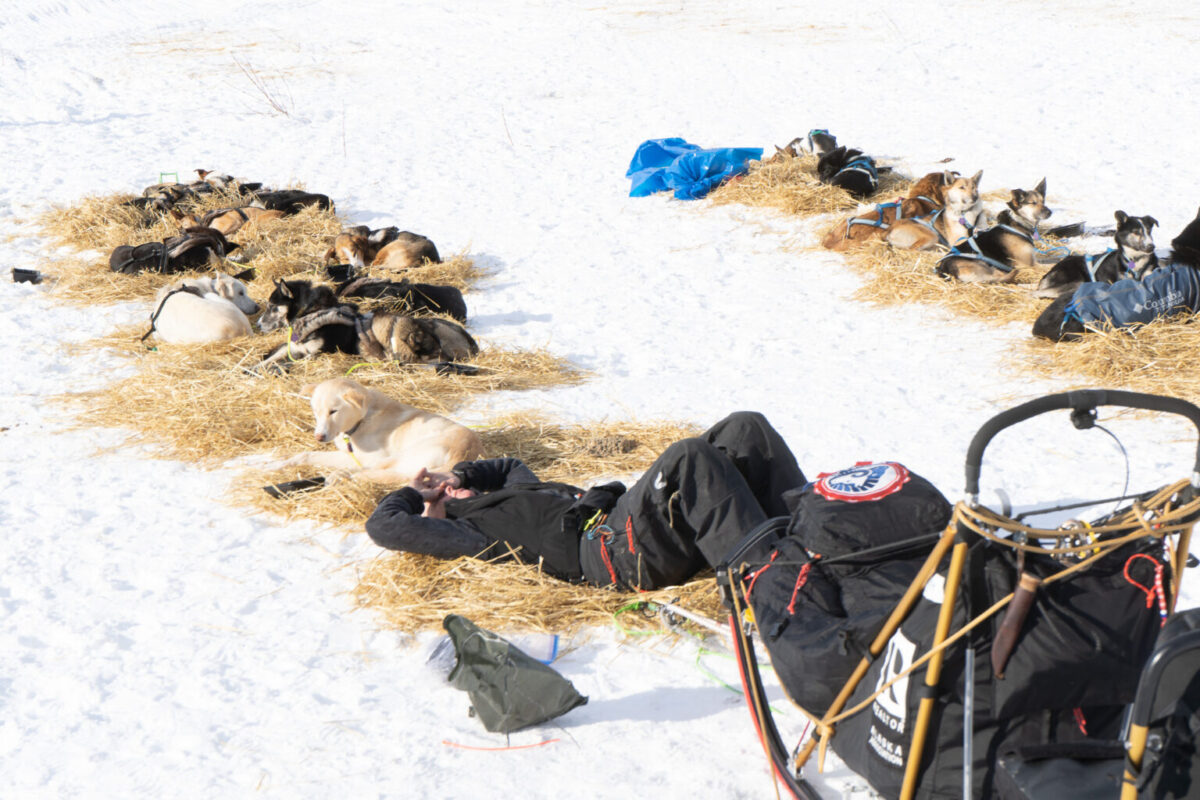
She said the trail still left her with three injured dogs, who she would send home from Nikolai.
Nearby, Matt Failor dished out water for his resting dogs as he prepared to leave the checkpoint. His running schedule had him leaving in the heat of the day, something he wasn’t too excited about.
“We were able to get ‘em out of the heat yesterday, but they’re gonna have to run a few hours in the heat now,” he said.
But, he said, he’s gotta keep moving down the trail.
Image at top: A team approaches Nikolai on Tuesday, about a quarter of the way into the Iditarod Trail Sled Dog Race. (Lex Treinen/Alaska Public Media)

